An automated Astrophysics lab for everybody: the activities of the Astronomical Observatory of the University of Siena during two years of Covid-19 pandemic.
- University of Siena, Department of Physical Science, Earth and Environment, Astronomical Observatory, Italy (marchini@unisi.it)
In 2009 Elisa, a student of Physics and Advanced Technologies, could not access the dome of the University of Siena Astronomical Observatory because she is forced on a wheelchair by disability. “Advanced technologies” helped her, though. Between 2010 and 2012 the Observatory instrumentation was completely updated, but, most importantly, was fully automated, and made remotely controllable trough an Internet connection.
Since 2012 the Observatory is a laboratory where university and high-school students learn to study the starry sky and how to use the most recent instruments and technologies for astronomical image acquisition and analysis. Through this acquired knowledge, small projects focused on asteroids, variable stars and extrasolar planets research can be conducted by a wide range of students, academic organizations and enthusiast citizens.
In August 2015, Sara Marullo, a student in Physics and Advanced Technologies at the University of Siena who lived very far from the observatory, managed to conduct a series of observations, required by her internship, from her home. During an asteroid study session, in a case of perfect serendipity, she discovered a peculiar binary star. A few months later, that discovery of a new double star became the topic of her thesis and of an article published in the Journal of the American Association of Variable Star Observers.
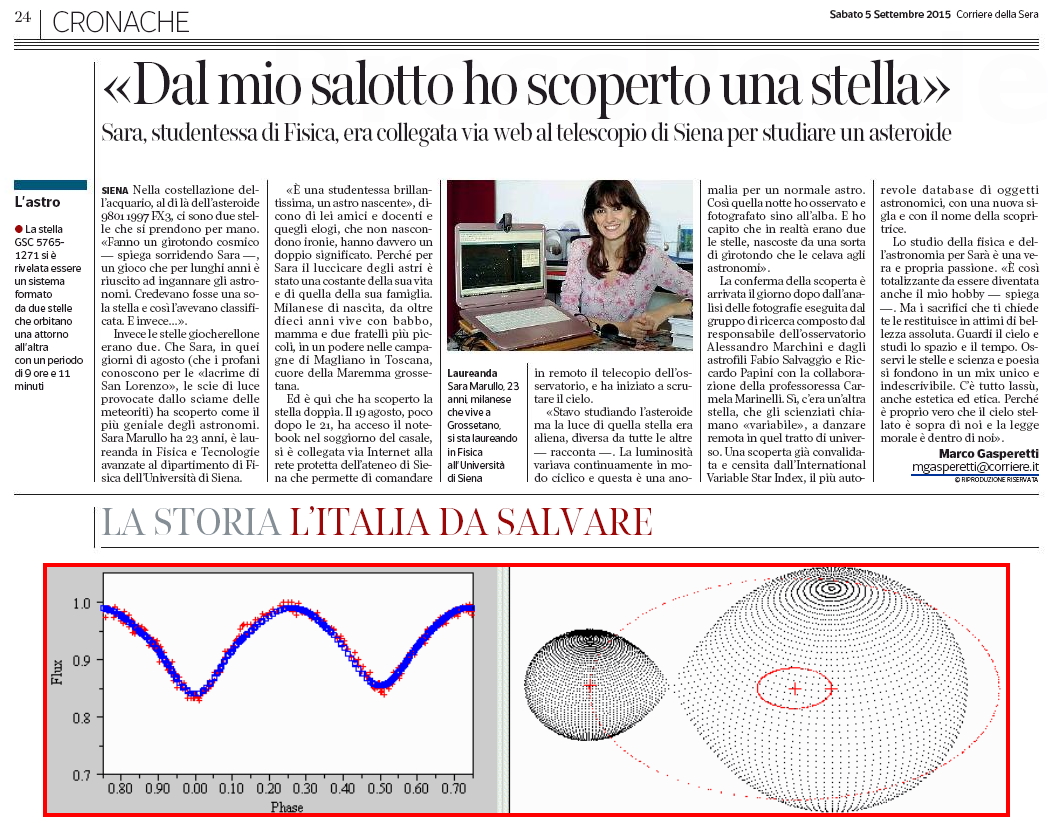
A famous Italian newspaper writes about the binary star discovered by Sara Marullo, and titles: “I discovered a star from my living room”.
Thanks to the automation implemented ten years ago, it has been possible to face the last two years of the Covid-19 pandemic without interrupting teaching, research, and scientific dissemination activities. University students were able to perform remote imaging sessions for their internships, while high school students participated remotely in astrophysics orientation projects.
In April 2020, Leonella Filippa Saya, another student of the course in Physics, although in full pandemic lockdown, was able to finish her university internship and discuss her thesis on the photometric study and 3D modeling of the asteroid (118) Peitho. Her thesis allowed her to appear as the author of an article published in the Minor Planet Bulletin.
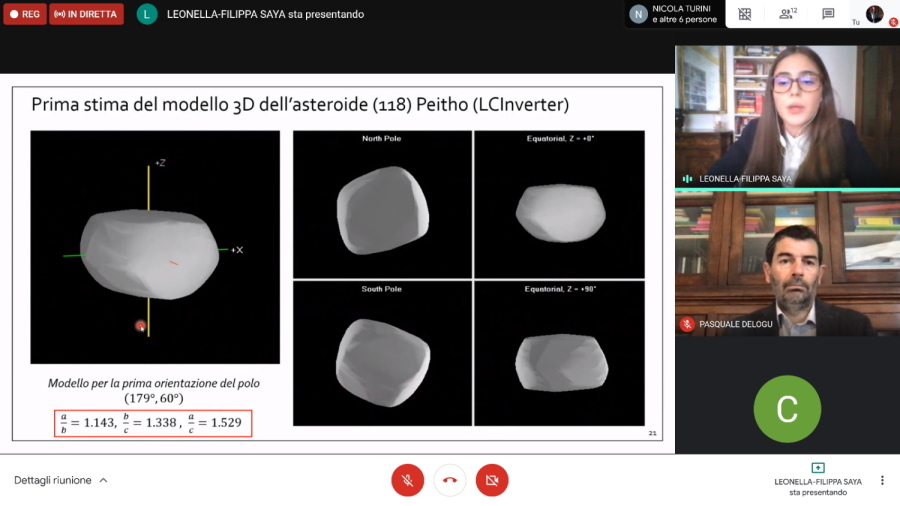
Leonella Filippa Saya discussing her thesis online during the pandemic lockdown.
Many high school students were able to participate remotely in the university guidance course offered by the observatory, entitled "Hunting for ancient photons, astronomy in the digital age".
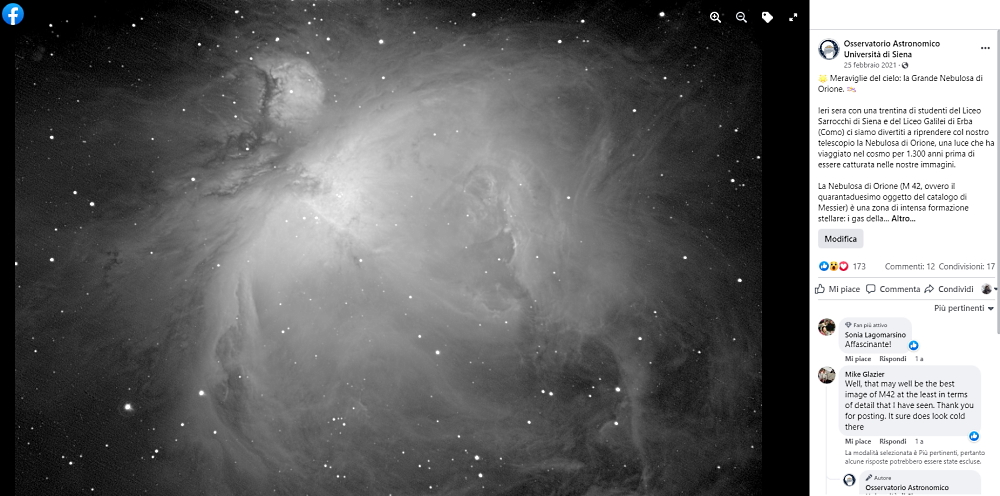
An image of the Great Orion Nebula captured in February 2021 by the students of Liceo “Sarrocchi” in Siena and Liceo "Galilei" in Erba (Como) via remote operation of the telescope from their homes.
Worthy of note is a group of fifteen students from the Liceo “Galilei” in Erba (Como), in Northern Italy, who in June 2020 remotely attended some observing sessions of the asteroid (58) Concordia, and actively participated in data analysis. For their efforts, their names were mentioned in the acknowledgments on a scientific article published in the Minor Planet Bulletin.
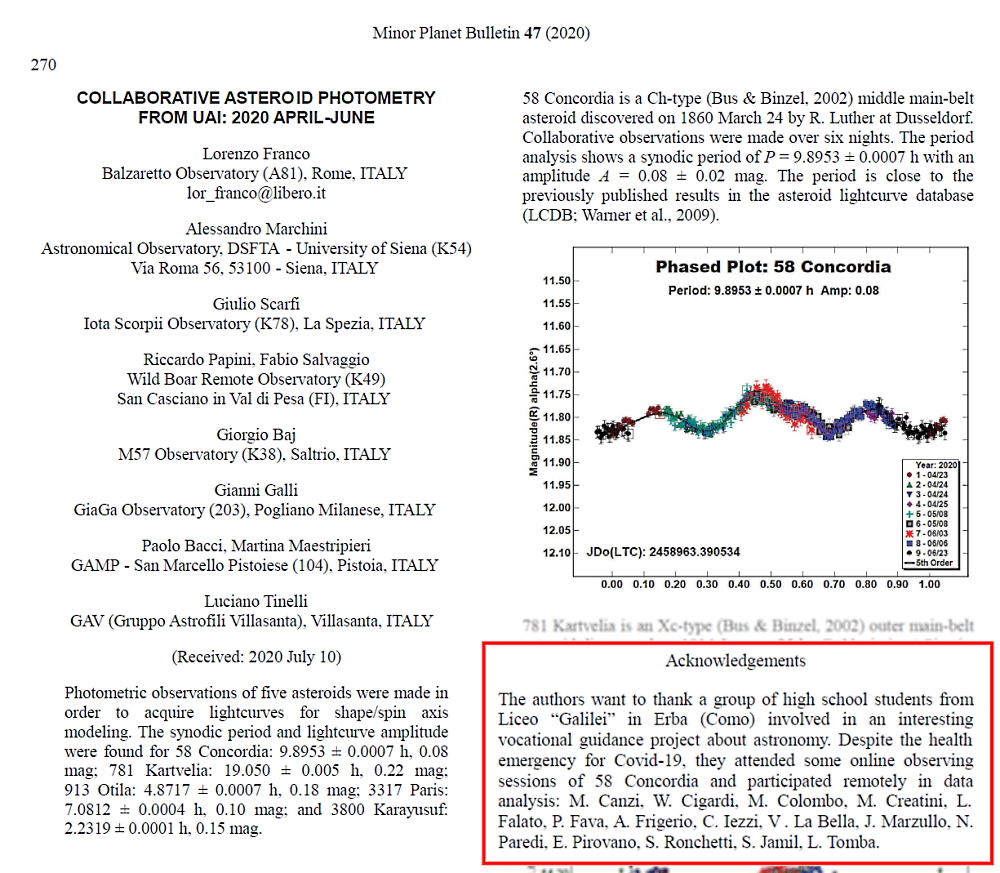
The article published in the Minor Planet Bulletin with the acknowledgments to the students of Liceo "Galilei" in Erba (Como)
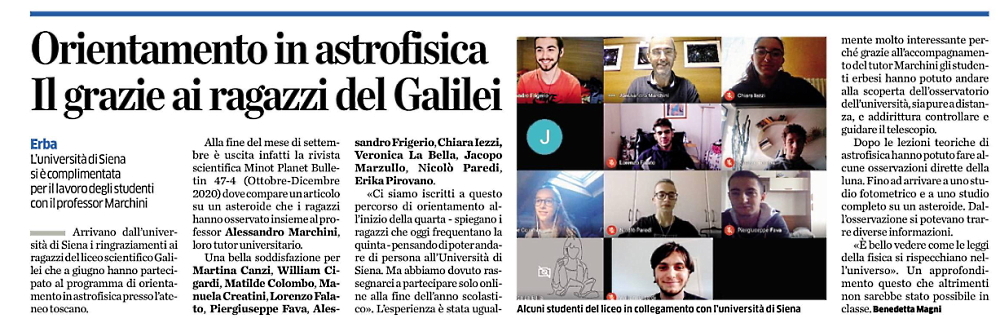
A Como newspaper writes about the guidance project in astrophysics carried out by the students of Liceo "Galilei".
During the entire lockdown period it was also possible to offer many live shows on the observatory's social profiles; these dissemination activities allowed thousands of connected citizens to follow the Observatory’s scientific research, and stimulated them to observe the starry sky from their own windows or gardens. Many of these online initiatives have been organized for particular events such as the arrival of a comet, the close passage of an asteroid, or the super-moon.
One of the most followed live shows, with over 60,000 views on YouTube and Facebook, was the one organized for the spectacular Jupiter-Saturn conjunction on December 21, 2020.
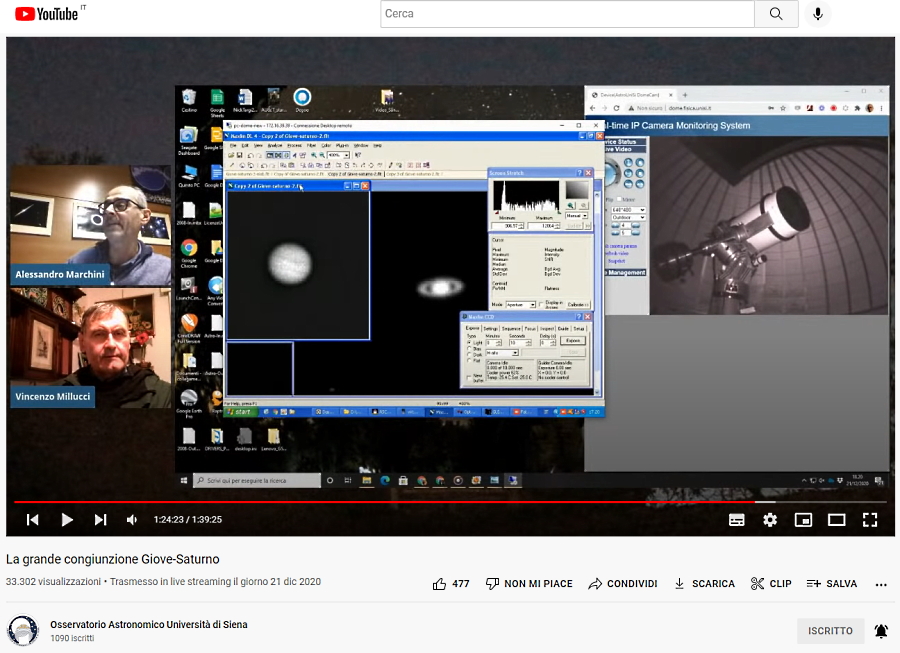
The live show carried out for the Jupiter-Saturn conjunction on December 21, 2020.
While we are fully aware of how much more engaging the physical presence of students and researchers is, since it allows greater empathy between teachers and students or between researchers and the public, the pandemic has forced the astronomical observatory to successfully continue its activities in its purest form, as an instrument: an example of how a serious problem can be transformed into an opportunity thanks to the technology developed over the years.
How to cite: Marchini, A.: An automated Astrophysics lab for everybody: the activities of the Astronomical Observatory of the University of Siena during two years of Covid-19 pandemic., Europlanet Science Congress 2022, Granada, Spain, 18–23 Sep 2022, EPSC2022-1099, https://doi.org/10.5194/epsc2022-1099, 2022.

